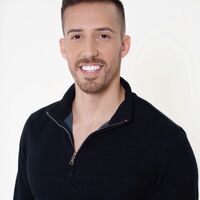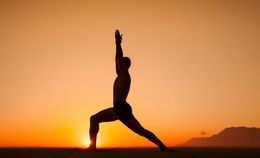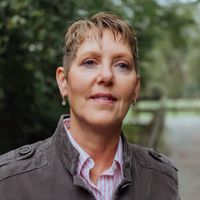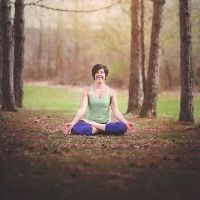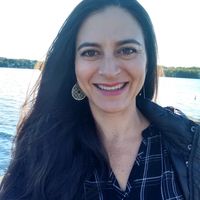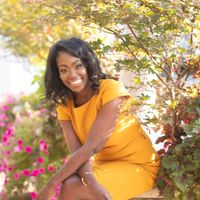Growing up in a Cuban household as an only child, I always felt the need to balance the roles of a child and an adult. The emotional distance between my parents was always evident to me, unknowingly shaping the challenges I would face later in life. Their fragile relationship constantly threatened my sense of stability, creating a perpetual sense of unease.
This early environment, coupled with a painful end to a 6-year relationship, deeply affected me. The end of this relationship, in which I had invested so much of myself, felt like a deep loss of identity. It was incredibly hard to let go, as it felt like I needed to reinvent myself without knowing where to begin. This situation mirrored patterns I had observed in my family, particularly from my mother. That's when I realized that to avoid repeating this painful experience, I needed to heal the wounds that had contributed to it in the first place.
Not knowing where to begin in the aftermath of my relationship, the only thing I felt I could do was to observe and pay attention to areas of my life where my reactions or actions might have been influenced by trauma. This gradual process of introspection led me to become more mindful. As I started to identify these patterns, I began exploring meditation. It became a tool I relied on to navigate through this confusing phase. This shift to mindfulness and meditation marked my cautious approach to healing. I consciously steered away from traditional medical methods, avoiding medications and antidepressants due to their potential side effects. This choice reflected a departure from conventional therapies, as they fell short in providing the holistic healing I was seeking.
Moving forward with the mindful intention of healing and personal growth, I serendipitously discovered yoga. It happened one day while searching online for natural ways to address repressed emotions. I stumbled upon a yoga video on YouTube, and this simple click marked the beginning of a significant transformation. The yoga practices I found were not just physical exercises; they were gateways to emotional and spiritual release. Intrigued and inspired by this experience, I transitioned to a structured 500-hour Ashtanga Yoga training. This step was more than a change in my daily routine; it represented a shift in how I approached life and well-being.
Immersing myself in yoga, I began to take my overall health more seriously. I grew increasingly aware of the mind-body connection, understanding that wellness isn't just about one aspect of our being, but the harmony of the whole self. This awareness led to changes in my diet and lifestyle, as I became more attentive to what nourished my body and spirit. Through yoga, I learned an invaluable lesson: healing involved facing and embracing the emotions I had long avoided. It meant peeling back layers of buried feelings, acknowledging them, and learning to sit with them rather than running away.
Continuing to work on myself, and having already healed much of what once held me back, I started to allow myself to explore new territories. Acting, which had always caught my interest but felt a bit out of my comfort zone, began to look more inviting. As I honed in my yoga and meditation practices - facing my demons head-on, I unknowingly armed myself with the courage to try new things.
Acting became a liberating space where I could express myself and connect with my emotions. It allowed me to explore and embrace different aspects of my identity without judgment. This experience didn't just shape me as an artist; it enhanced my skills as a psychotherapist and compassionate human being. I came to understand that, to some extent, we all play roles in life. However, beyond the theater, I realized I didn't want to just 'act' out a part anymore. I wanted to truly be the person I felt I was when at my best.
The emotional release and self-awareness I gained through meditation, introspection, and yoga, were truly transformative. I moved from a profound state of loss and disconnection to a heightened awareness of the mind-body connection within myself, which in turn deepened my sense of unity with the world around me.
This personal evolution was not only liberating but also instrumental in shaping my professional path. As I pursued my career in psychotherapy, I chose to specialize in trauma. This decision was personal; I wanted to help others in ways that I had once needed. It became my goal to offer the tools and support that could make a real difference in someone's life.
In my work as a psychotherapist, the holistic practices I adopted for myself naturally shaped my approach with clients. I combine traditional talk therapy with techniques like yoga and mindfulness, fostering a healing environment rooted in compassion and empathy. This method, tailored to each person's journey, empowers individuals to overcome their challenges. Alongside individual therapy, I lead groups on stress management and relationship building, creating a community of shared experiences and growth. My commitment to ongoing education ensures I stay current with new therapeutic insights.
This holistic focus also guides my personal health decisions. I chose not to rely on medications for mental health, avoiding their side effects and instead addressing the root causes of my challenges. Moving away from past practices, I transitioned from merely managing symptoms to addressing the underlying causes of any issue. By applying this approach to both my personal care and professional work, I emphasize the importance of true holistic healing – addressing the mind, body, and spirit as a whole.
Having emerged from a complicated start in life, I'm on a mission to inspire and guide others on their path to true well-being. With my professional training and the lessons I've learned along the way, I'm here to show you that if I can do it, you can too.


